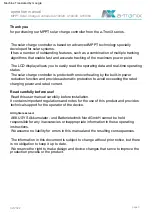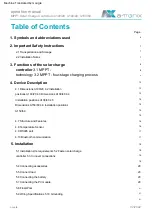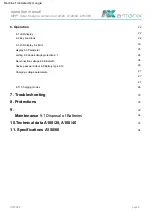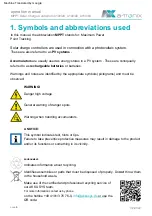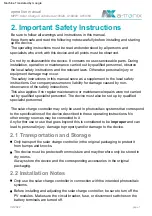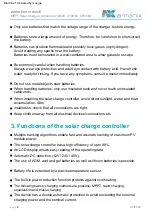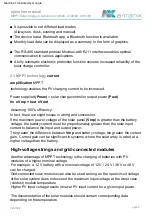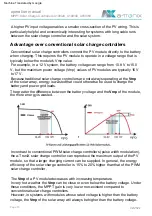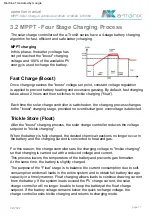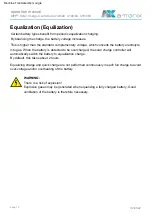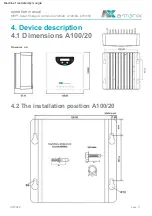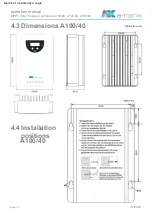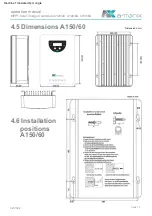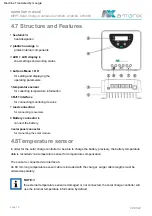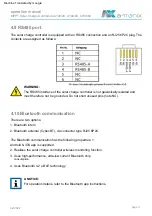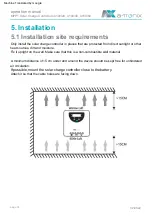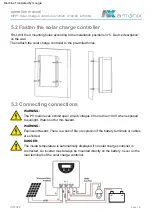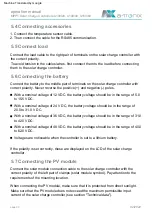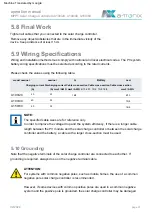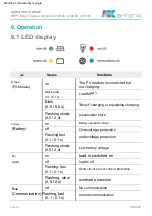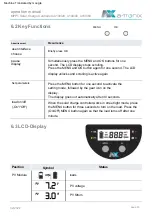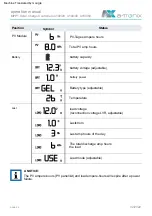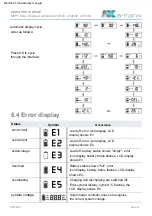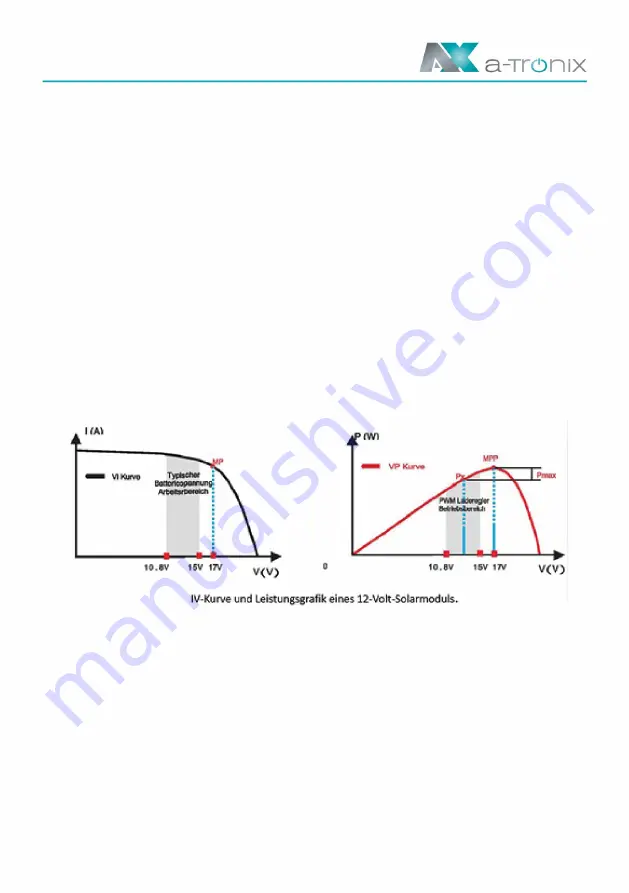
The Vmp of a PV module decreases with increasing temperature.
In very hot weather the Vmp can be close or even below the battery voltage. Under
these conditions, the MPPT gain is very low or non-existent compared to
conventional solar charge controllers.
Because traditional solar charge controllers are not always operating at the Vmp
of the solar array, energy is wasted that could otherwise be used to charge the
battery and power grid loads.
However, in systems with modules whose rated voltage is higher than the battery
voltage, the Vmp of the solar array will always be higher than the battery voltage.
A higher PV input voltage enables a smaller cross-section of the PV wiring. This is
particularly helpful and economically interesting for systems with long cable runs
between the solar charge controller and the solar system.
The greater the difference between the battery voltage and the Vmp of the module,
the more energy is wasted.
In contrast to conventional PWM solar charge controllers (pulse width modulation),
the a-TroniX solar charge controller can reproduce the maximum output of the PV
module, so that a larger charging current can be supplied. In general, the energy
efficiency of the solar charge controller is 15% to 20% higher than that of the PWM
solar charge controller.
Conventional solar charge controllers connect the PV module directly to the battery
when charging. This requires the PV module to operate in a voltage range that is
typically below the module's Vmp value.
For example, in a 12 V system, the battery voltage can range from 10.8 V to 15.0
V, but the maximum power voltage (Vmp) values of PV modules are typically 16 V
to 17 V.
operation manual
Page 10
02/2022
Advantage over conventional solar charge controllers
MPPT Solar Charge Controllers A100/20, A100/40, A150/60
Machine Translated by Google



